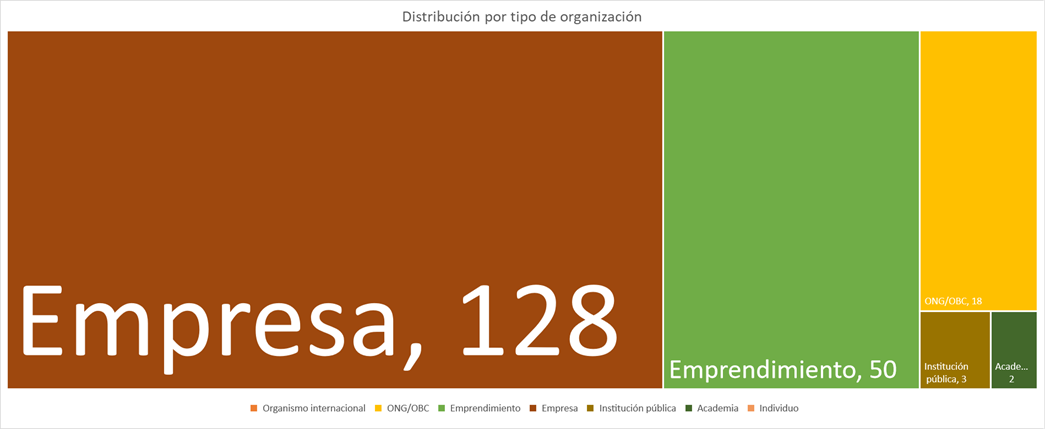Disclaimer:
Please be aware that the content herein has not been peer reviewed. It consists of personal reflections, insights, and learnings of the contributor(s). It may not be exhaustive, nor does it aim to be authoritative knowledge.
Title
Please provide a name for your action learning plan.
A Plastic Circle for a Zero-Waste Panama
Challenge statement
Challenge type: If you are working on multiple challenges, please indicate if this is your "big bet" or "exploratory" challenge.
Please note: we ask you to only submit a maximum of 3 challenges - 1x Big Bet, 2x Exploratory. Each challenge must be submitted individually.
EXPLORATORY
Challenge statement: What is your challenge? (Please answer in specific terms: "Our challenge is that...”.)
If you look around, you'll see plastic everywhere. Without going too far, you're probably reading this on your phone, tablet, or laptop, all of which contain plastic components. It's a material that has revolutionized our daily lives and seems to make everything easier. However, this convenience comes at a cost: just look at the rivers and streams in Panama City to see how tons of waste, mostly plastic, end up in the ocean. Or consider the fires at Cerro Patacón, our city's landfill and open-air dumps that make it hard for us to breathe. It's essential to shift from a produce, consume, and dispose model to a plastic circle that protects our ecosystems and our health.
Background: What is the history of your challenge? What is causing or driving it? Who is involved? How does the current situation look like? What undesired effects does it produce?
At least 91% of the plastics we import are final products: flip-flops, containers, tables, or chairs. Between 2015 and 2019 alone, Panama imported an annual average of 160,704 tons of plastic raw materials, yet we lack sufficient environmentally responsible systems and mechanisms to manage and dispose of them at the end of their lifecycle. We need innovative solutions to create a circular system that prevents plastic pollution. This is why UNDP is exploring various starting points to accelerate the transition toward a circular economy.
Since 2021, UNDP Panama and its accelerator lab has supported solutions mapping, collective intelligence and experimentation efforts on the issue of plastics circularity, resulting on the weaving of relationships and connections within the ecosystems, specially through efforts such as PechaKucha, where we first organized a 'Plastic Circle' activity with the support of the AccLab of Perú.
This effort resulted on Audobon Americas continuing this tradition to invite solutions to Plastic Circle vol. 2 in the Plastics Symposium in 2024, as part of the Blue Natural Heritage project, it included a bootcamp for circular solutions on plastics with the support of Escala Latam, with whom at the time we identified as an actor that could dynamize and identify ways to unlock financing towards circular solutions created by local actors in Panama.
Quantitative evidence: What (official) data sources do you have on this challenge that better exemplifies the importance and urgency of this frontier challenge? You can add text, a link, or a picture.
Panama is one of the biggest plastic generators per capita in the Latin American region, several studies from JICA (2001) to INECO (2017) and the recent baseline study on plastics (Ministry of Environment, 2024) show how plastics is the second most generated material in Panama after organic waste, while we do not have proper systems in place to manage it. Other analysis, such as the one on imports and exports of plastics and rubber show a sneak peek on the complexity of this issue and the need to take urgent action from global to local levels.
Qualitative evidence: What weak signals have you recently spotted that characterizes its urgency? Please provide qualitative information that better exemplifies the importance and urgency of this frontier challenge. You can add text, a link, or a picture.
Through the solutions mapping process, we identified a niche of solutions that come from private sector, entrepreneurs, businesses and academia that could enhance the transition towards circular systems for plastics at a local level, at the same time, we identified that key initiatives for plastics circularity such as the Blue/Natural Heritage project could be articulated to better support entrepreneurial, local efforts.
Value proposition: What added value or unique value proposition is your Accelerator Lab bringing to solving this challenge? Why is it your Lab that needs to work on this challenge and not other actors within UNDP, other stakeholders in the country respectively? Why is it worth investing resources to this challenge?
In the context of the National Platics Action Partnership (NPAP) led by the Ministry of Environment in Panama, there was a need to showcase and dynamize local solutions that align with the NPAP objectives, given that the AccLab has previously supported solutions mapping on plastics, collective intelligence efforts and experimentation on this topic, we were asked to design this innovation challenge. We were uniquely positioned to work on this given that we could articulate the ecosystem and dynamize this innovation challenge with the expertise of Escala Latam, which was launching a series of 'Escalatones' on a diversity of sustainability issues, in a way, we 'weaved' existing relationships and momentum through this process in a way that builds something bigger than the sum of its parts.
Short “tweet” summary: We would like to tweet what you are working on, can you summarize your challenge in a maximum of 280 characters?
Can we 'weave' a Plastic Circle for a Zero Waste Panama?
Partners
Who are your top 5 partners for this challenge? Please submit from MOST to LEAST important and state Name, Sector and a brief description of the (intended) collaboration.
Please state the name of the partner:
Ministry of Environment
What sector does our partner belong to?
Government (&related)
Please provide a brief description of the collaboration.
The Ministry of Environment leads the National Plastics Action Partnership (NPAP) UNDP Panama is the implementing partner and through this effort as a frame we are launching this innovation challenge.
Is this a new and unusual partner for UNDP?
No
Who are your top 5 partners for this challenge? Please submit from MOST to LEAST important and state Name, Sector and a brief description of the (intended) collaboration.
Please state the name of the partner:
Audubón Society (Americas)
What sector does our partner belong to?
Civil Society
Please provide a brief description of the collaboration.
Audubon Society is the implementing partner of the Project Blue Natural Heritage project, also led by the Ministry of Environment. Given that this effort also aligns with the NPAP project in terms of the reduce of plastic pollution, we joined efforts to launch the Plastic Circle together.
Is this a new and unusual partner for UNDP?
No
Learning questions
Learning question: What is your learning question for this challenge? What do you need to know or understand to work on your challenge statement?
What emerging solutions exist in Panama that have the potential to accelerate circular transitions for plastics at a local level?
To what stage(s) in the learning cycle does your learning question relate?
Grow
Usage of methods: Relating to your choice above, how will you use your methods & tools for this learning question? What value do these add in answering your learning question?
The purpose of using solutions mapping is building on the solutions that already exist to launch this innovation challenge, sharing the opportunity to apply to the innovation challenge to existing network of actors, while also opening the space to map new solutions by launching an open campaign for more actors to apply.
The key evaluation criteria for solutions were aligned with the NPAP objectives:
Effectiveness: The proposal must clearly outline a significant potential to reduce plastic pollution, benefiting ecosystems and human health.
Innovation and Creativity: The solution should be innovative, incorporating original ideas, the use of new technologies, or creative methods.
Inclusion and Participation: The proposal should promote collaboration and community empowerment, ensuring equitable benefits and contributions toward developing sustainable and fair solutions for plastic management.
Financial Sustainability: The solution must demonstrate financial sustainability by presenting a viable business model that ensures long-term implementation and continuity.
Partnerships: The proposal should highlight the ability to engage diverse stakeholders and show how partnerships will contribute to the project's success and scalability, ensuring effective and sustainable cooperation in implementing and maintaining initiatives.
Existing data gaps: Relating to your choice above, what existing gaps in data or information do these new sources of data addressing? What value do these add in answering your learning question?
We chose to use the platform of Escala Latam for solutions to apply, in the process, they needed to fill out a form with their value proposition and key performance data, which was evaluated to choose the winner of the Escalaton.
Closing
Early leads to grow: Think about the possible grow phase for this challenge - who might benefit from your work on this challenge or who might be the champions in your country that you should inform or collaborate with early on to help you grow this challenge?
The intention is to continue to weave the ecosystem of actors in the plastics circularity domain, more than finding a 'winner' or 'silver bullet' the idea is to showcase and celebrate solutions, articulate them with key policies and identify ways to unlock financing for circular initiatives at scale. We are also exploring the opportunity to launch a similar challenge focused on food systems and municipal markets, which will build on the learnings from this Plastic Circle Escalaton.
END OF ACTION LEARNING PLAN: Thank you! The form saves automatically and your submission has been recorded. You may now exit this window.


 11Sustainable cities and communities
11Sustainable cities and communities 12Responsible consumption and production
12Responsible consumption and production

Comments
Log in to add a comment or reply.